How to Fix Unknown USB Device Port Reset Failed Error on Windows?
The “Unknown USB Device (Port Reset Failed)” error appears in the Device Manager. After expanding the Universal Serial Bus controllers section in Device Manager, you might notice a yellow triangle next to an entry in the list with the error message in the description.
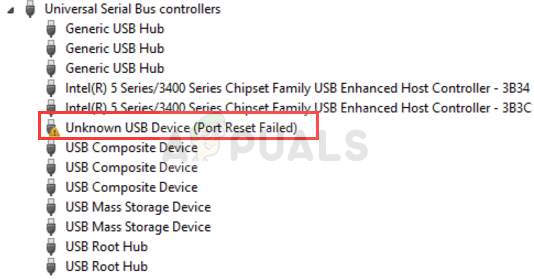
If you receive this error message for a USB device, it’s highly likely that the device won’t function properly or won’t be recognized by your computer. There are several methods you can use to resolve this problem so make sure you check them out below!
What Causes the Unknown USB Device (Port Reset Failed) Error on Windows 10?
There are several distinct causes for the problem which can actually help you determine the correct method which might help you resolve the problem. That is why we strongly recommend you check out the list below!
- Old or broken drivers – Old or improperly installed drivers can make your computer fail to recognize the installed device. Consider reinstalling or updating them!
- The device is turned off – Sometimes the computer will turn off certain devices in order to save power which can cause this problem. Make sure you disable this option in Device Manager.
- USB Debug is disabled – Enabling USB Debug on Dell PCs and laptops has helped people resolve the problem, especially when dealing with USB 3.0 and Windows 7 installation.
Solution 1: Reinstall the Device Driver
It’s quite possible that the driver installation for the device was canceled or the device was unplugged before the driver could have been installed properly. This will result in an Unknown USB Device description for the device and you will have to reinstall the driver in order to find out which device is problematic. Follow the steps below in order to do so!
- Click the Start menu button, type in “Device Manager”, and select it from the list of available results by simply clicking the first one. You can also tap the Windows Key + R key combo in order to bring up the Run dialog box. Type in “devmgmt.msc” in the dialog box and click OK in order to run it.
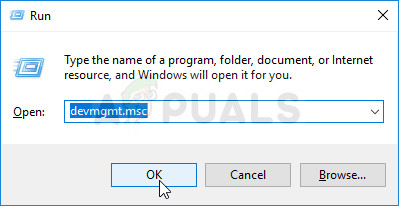
- The section you need to visit is named Universal Serial Bus controllers. Right-click the entry named Unknown USB Device (Port Reset Failed) and choose the Uninstall device option from the context menu which will appear.

- Confirm any dialogues or prompts which may ask you to confirm the uninstallation of the current driver and wait for the process to complete.
- You can now go back to Device Manager and click Action from the top menu. Click the Scan for hardware changes option and it will check for devices without drivers and reinstall them automatically.
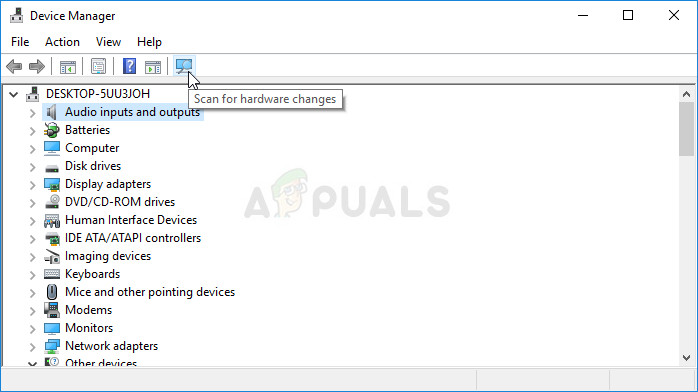
- Check to see if the problem has been resolved and if the unknown USB device has finally been recognized!
Solution 2: Don’t Allow the Computer to Turn off the Device
Some devices can be turned off by the computer when they are not in use in order to save power. However, some devices shouldn’t be turned off if you want to maintain their normal functionality and if you want to avoid driver issues such as the one explained in this article. Follow the steps below in order to tweak this power management setting!
- Click the Start menu button, type in “Device Manager”, and select it from the list of available results by simply clicking the first one. You can also tap the Windows Key + R key combo in order to bring up the Run dialog box. Type in “devmgmt.msc” in the dialog box and click OK in order to run it.

- The section you need to visit is named Universal Serial Bus controllers. Right-click the entry named Unknown USB Device (Port Reset Failed) and choose the Properties option from the context menu which will appear.
- Inside the properties window, navigate to the Power Management tab and make sure you uncheck the box next to the Allow the computer to turn off this device to save power option before clicking OK in order to apply the changes.
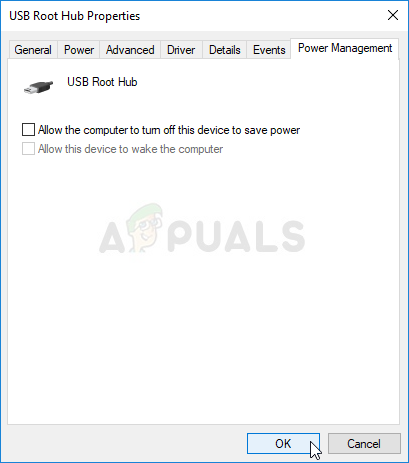
- Restart your computer and check to see if the Unknown USB Device description is still available inside Device Manager!
Solution 3: Run the Hardware and Devices Troubleshooter
Even though troubleshooters are rarely able to resolve the problem correctly, many users have reported that running the troubleshooter managed to resolve the problem easily. It’s probably the easiest method you can try out so make sure you start out with this method!
Windows 10 Users:
- Search for Settings in the Start menu and click on the first result which pops up. You can also click directly on the cog button at the lower left part of the Start menu or you can use the Windows Key + I key combination.

- Locate the Update & security section at the bottom part of the Settings window and click on it.
- Navigate to the Troubleshoot tab and check under the Find and fix other problems
- Hardware and devices troubleshooter should be right there at the bottom so make sure you click on it and follow the instructions on the screen.
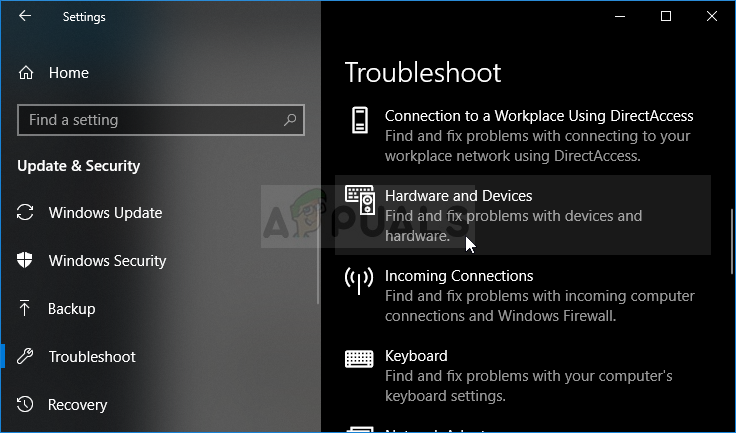
- Check to see if the problem has been resolved and if the error notification still appears!
Other versions of Windows:
- Open Control Panel by searching for the utility in the Start button or by clicking the Search button (Cortana) button at the left part of your taskbar (bottom left part of your screen.
- You can also use the Windows Key + R key combo where you should type “control.exe” and click Run which will also open Control Panel directly.
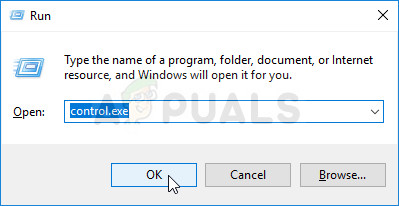
- After Control Panel opens, change the view to Category and click on View devices and printers under Hardware and Sound in order to open this section.
- Head over to the Devices section, right-click on your PC’s icon and choose the Troubleshoot. You might also be able to see a yellow triangle next to the PC icon and the Troubleshoot entry in the context menu.
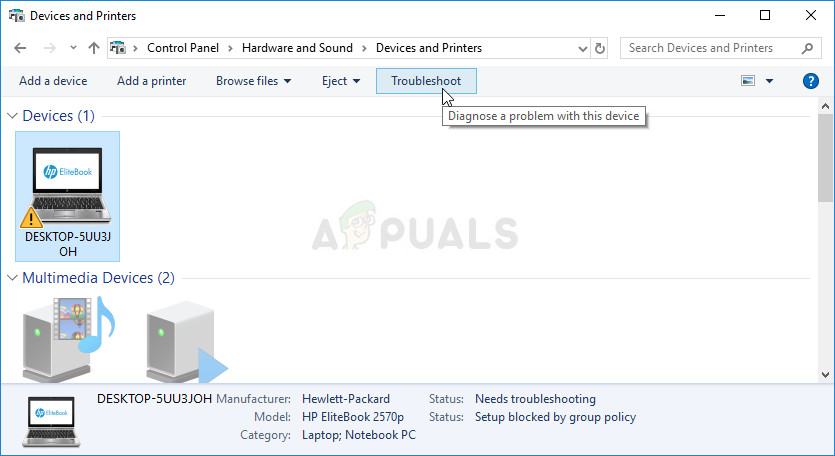
- Confirm any dialog options which may pop up and follow the instructions which will appear on-screen.
Solution 4: Enable USB Debug (Dell Users Only)
The USB Debug option in Dell’s BIOS screen is used to manage USB 3.0 devices as some users often struggle installing Windows on PCs which don’t fully support USB 3.0. This has helped some people resolve the Unknown USB Device problem, especially if they are trying to install Windows 7 on an older version of a Dell PC or laptop.
- Turn your PC on again and try to enter BIOS settings by pressing the BIOS key as the system is about to start. The BIOS key is typically displayed on the boot screen, saying “F2 = Setup” or something similar to that. There are other keys as well. The usual BIOS keys are F1, F2, Del, etc.

- Now it’s time to enable USB Debug. The option which you will need to change is located under different tabs on BIOS firmware tools for different Dell devices and there is no unique way to find it. It’s usually located under the Advanced
- Use the arrow keys to navigate to the Advanced tab inside BIOS. Inside, select an option named Miscellaneous Devices.
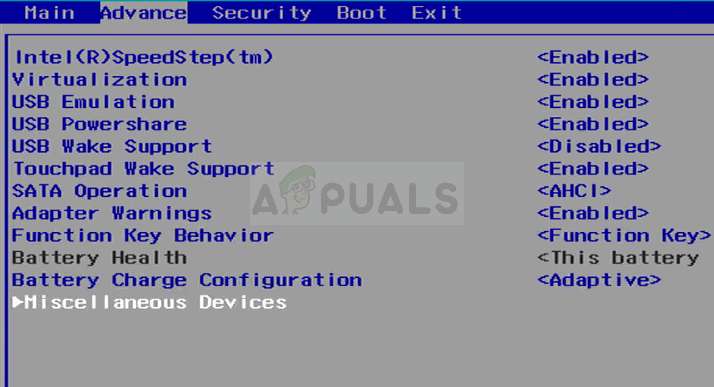
- After selecting the option, you will be prompted with various options. Make sure you scroll down until you reach the USB Debug option and click the Enter key in order to change it from Disabled to Enabled.
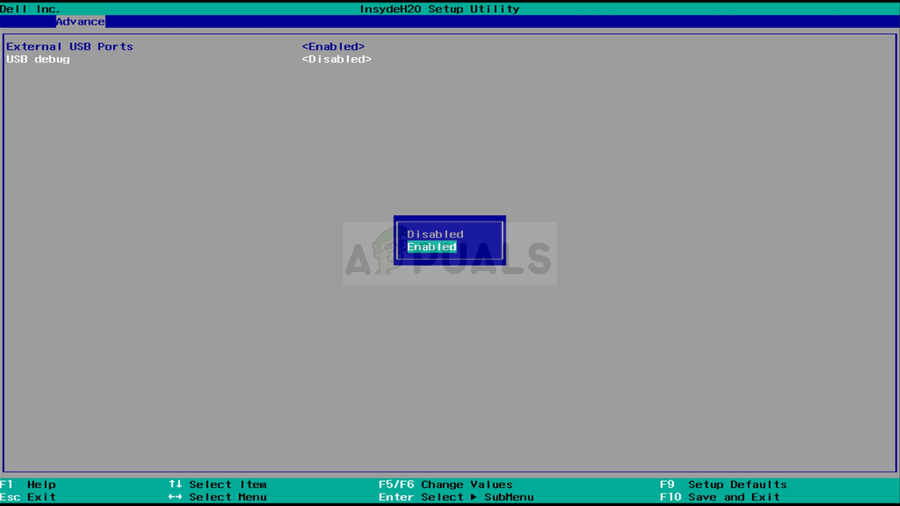
- Navigate to the Exit section and choose to Exit Saving Changes. This will proceed with the computer’s boot. Check to see if the problem persists.





